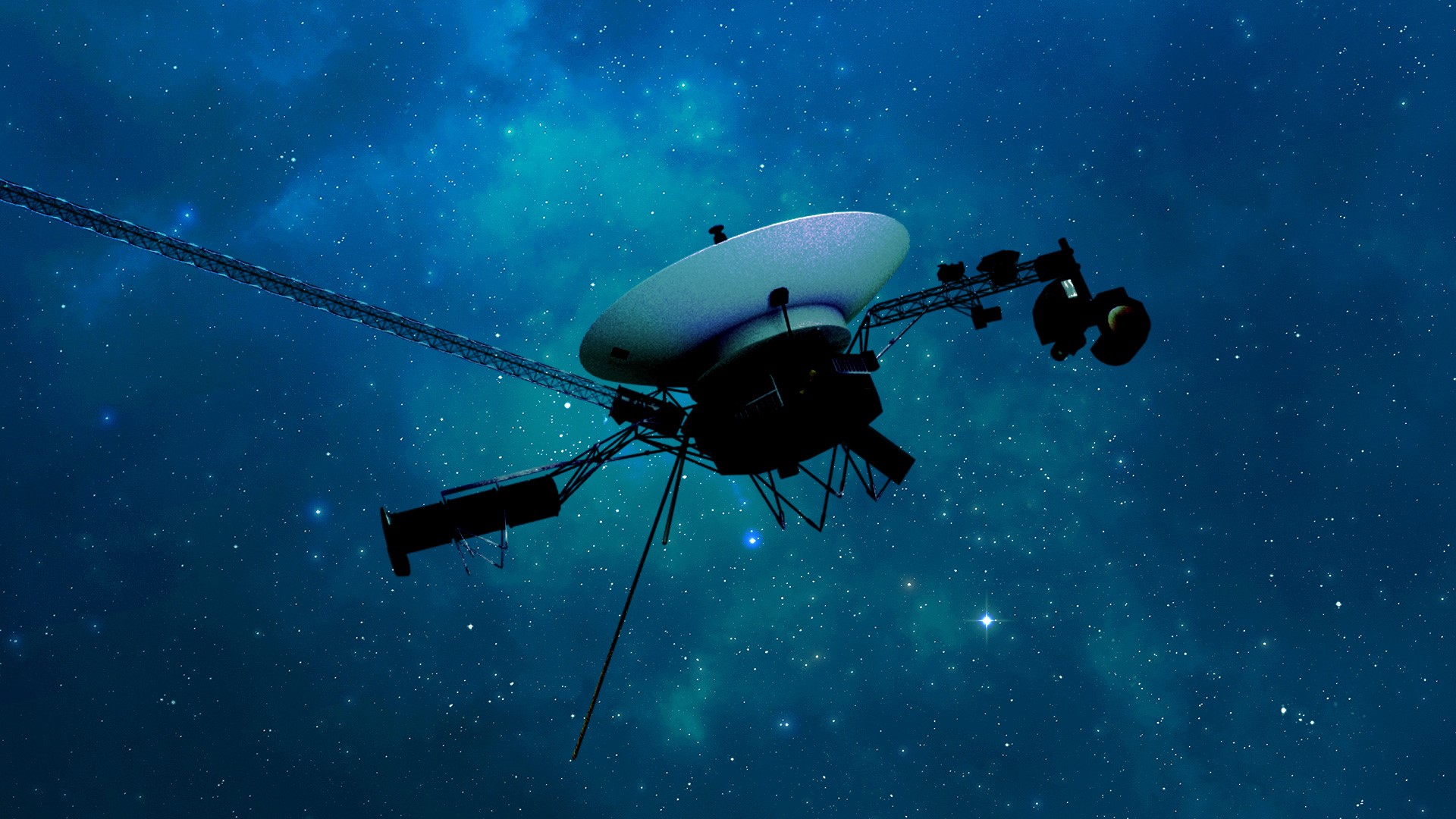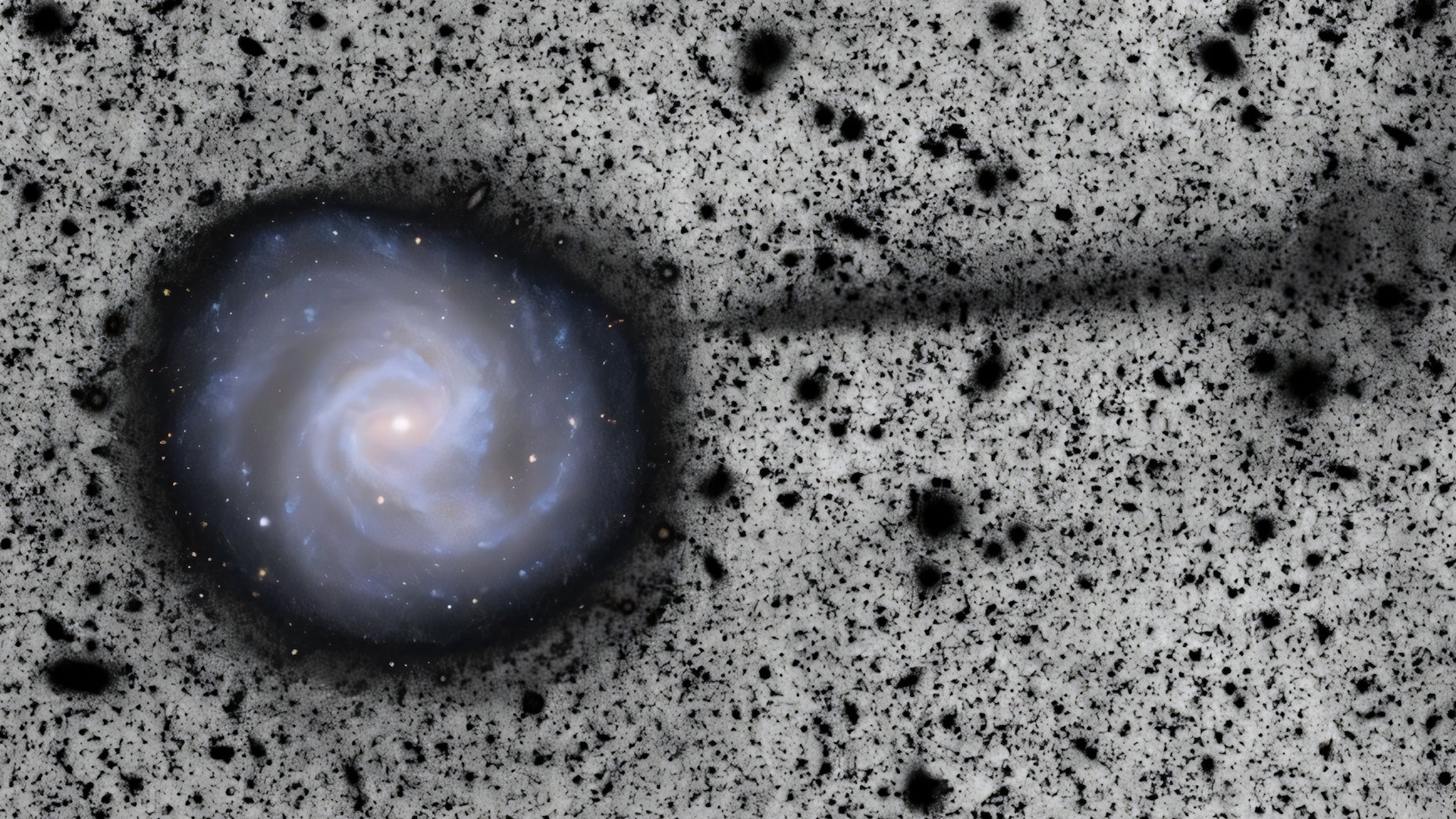'Yet another miracle save': NASA engineers complete nail-biting maneuver to resurrect Voyager 1's long-dead thrusters
More than 15 billion miles from home, Voyager 1's ailing thrusters were threatening to abort the craft's mission. Until NASA engineers brought them miraculously back to life.

NASA engineers have resurrected Voyager 1's half-century-old thrusters more than 20 years after they fell silent, reviving a crucial backup just months before a planned communications blackout that could have doomed the craft.
The miracle fix has bought precious time for the veteran spacecraft, enabling it to stay in operation until contact with Earth is reestablished next year.
Launched in 1977, Voyager 1 is currently more than 15 billion miles (24 billion kilometers) from Earth. As such, it takes 23 hours for any radio signal to travel from the craft to our planet.
But the Earth-based antenna that sends these commands to Voyager 1 and its twin, Voyager 2, is due an upgrade. And the craft's backup thrusters, which keep it locked on a course to a reference star that keeps it oriented toward and in contact with Earth, have been slowly clogging up with propellant residue.
These backup thrusters have been used since 2004, when two heater circuits that warm hydrazine fuel for ignition in its main thrusters conked out.
"I think at that time, the team was OK with accepting that the primary roll thrusters didn't work, because they had a perfectly good backup," Kareem Badaruddin, Voyager mission manager at NASA's Jet Propulsion Laboratory in Pasadena, California, said in a statement. "And, frankly, they probably didn't think the Voyagers were going to keep going for another 20 years."
But Voyager 1 did keep going, flying out into interstellar space in 2012. It is currently recording the conditions outside of the sun's protective magnetic field, or heliosphere, which blankets our solar system.
Get the world’s most fascinating discoveries delivered straight to your inbox.
Related: NASA engineers discover why Voyager 1 is sending a stream of gibberish from outside our solar system
With the backup thrusters clogging and the antenna blackout looming, NASA engineers decided to turn to drastic measures. The craft's two heater circuits could have died out from a disturbance that flipped the wrong switch, they reasoned; getting them to work again could be as straightforward as changing this switch back.
Yet while flipping a switch sounds simple, doing so remotely on a craft hurtling through interstellar space at around 35,000 mph (56,000 kmh) is significantly less so. The faulty heaters could only be fixed if the thrusters were turned on, but if the thrusters were on and the heaters weren't, any deviation from Voyager 1's course would trigger an automatic sequence to make the thrusters fire — causing the craft to explode.
Additional time pressure also came from Deep Space Station 43, a gigantic 230-foot-wide (70 meter) antenna in Canberra, Australia, that forms one third of NASA's Deep Space Network. This antenna is the only station with enough signal power to send Voyager commands.
But the station went offline on May 4 until February 2026 to undergo upgrades. The dish will temporarily come online again in August and December, but as Voyager 1's backup thrusters could be completely clogged by then, the engineers needed to know if the primary thrusters could work again before that time.
On March 20, the team fired out the signal, waiting a nail-biting 46 hours before it reached Voyager and a return signal came back. After this time, data began to stream back from the craft showing that the thruster heaters were warming up dramatically — the fix had worked.
"It was such a glorious moment," Todd Barber, the mission's propulsion lead at JPL, said in the statement. "Team morale was very high that day. These thrusters were considered dead. And that was a legitimate conclusion. It's just that one of our engineers had this insight that maybe there was this other possible cause and it was fixable. It was yet another miracle save for Voyager."
As both Voyagers continue on their endless journeys, their instruments are slowly shutting down and their power reserves are depleting. This makes their demise inevitable, but not for a little while longer, at least.

Ben Turner is a U.K. based writer and editor at Live Science. He covers physics and astronomy, tech and climate change. He graduated from University College London with a degree in particle physics before training as a journalist. When he's not writing, Ben enjoys reading literature, playing the guitar and embarrassing himself with chess.
You must confirm your public display name before commenting
Please logout and then login again, you will then be prompted to enter your display name.
